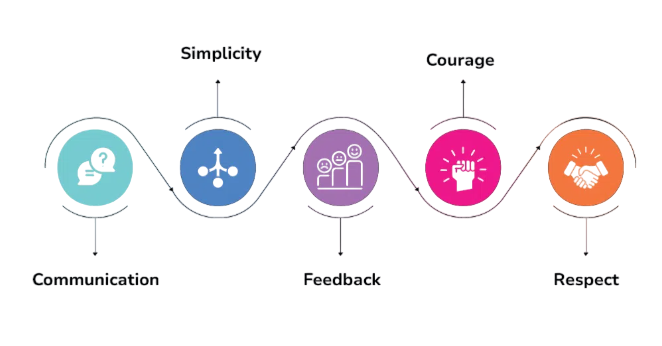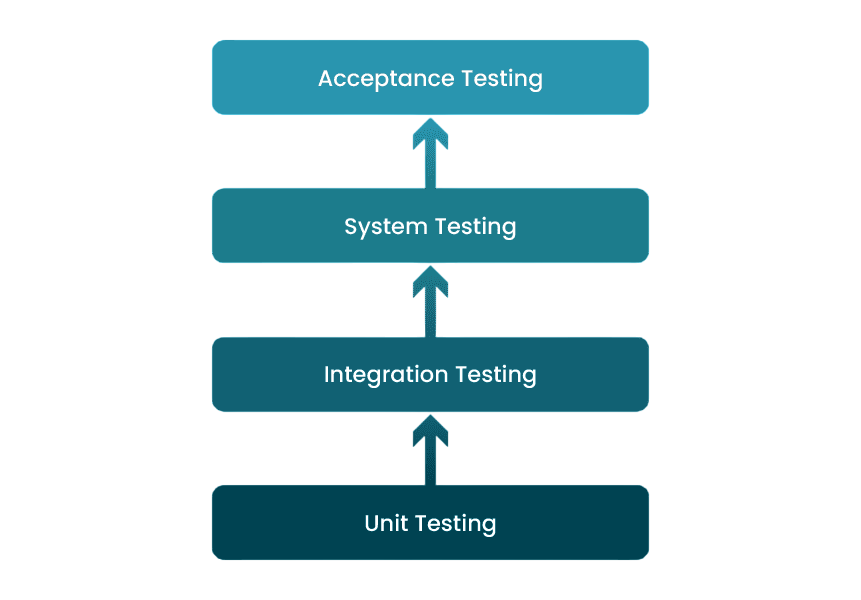
- Overview of XP
- History and Origin
- Key Principles of XP
- XP Lifecycle
- XP Practices (e.g., Pair Programming)
- Continuous Feedback
- Testing in XP
- XP Roles and Responsibilities
- Conclusion
Overview of XP
Extreme Programming (XP) is an agile software development methodology focused on improving software quality and responsiveness to changing customer requirements. It was developed by Kent Beck in the late 1990s to address the challenges of rapidly changing software needs in dynamic business environments. XP emphasizes frequent releases in short development cycles, which improves productivity and introduces checkpoints where new customer requirements can be adopted. Core practices include pair programming, test-driven development (TDD), Java Training continuous integration, simple design, and frequent communication with the customer. One of XP’s key strengths is its focus on collaboration. Developers work closely with stakeholders and among themselves, often in pairs, to ensure high code quality and shared understanding. Testing is central to XP; automated unit tests are written before code is developed, and the system is continuously tested throughout the lifecycle. XP encourages adapting to change rather than resisting it. Developers are empowered to refactor code when necessary, ensuring that the design remains clean and maintainable. Though it works best in small to medium-sized teams with open communication, many XP practices are widely applicable across different project scales. Overall, XP is a disciplined and adaptive methodology designed to deliver high-quality software that meets evolving customer needs.
To Earn Your Java Training Certification, Gain Insights From Leading Web Developer Experts And Advance Your Career With ACTE’s Java Training Today!
History and Origin
- XP was created by Kent Beck in the late 1990s.
- Developed as a response to challenges in traditional software development methods.
- First introduced in 1996 during the Chrysler Comprehensive Compensation System project.
- Emphasizes agility, flexibility, and customer collaboration Polymorphism in C++.
- Inspired by earlier iterative and incremental development methods.
- Formalized and popularized through Kent Beck’s 1999 book “Extreme Programming Explained.”
- Part of the Agile movement, contributing to the Agile Manifesto in 2001.
- Designed to improve software quality and responsiveness to changing customer requirements.
Key Principles of XP
Extreme Programming is based on several guiding principles that influence every stage of development:
- Communication – Developers, testers, and customers must maintain open, continuous communication to ensure everyone understands requirements and progress.
- Simplicity – Only implement what is needed now, not what might be needed in the future.
- Feedback – Gather feedback C++ Vectors frequently from both automated tests and real users to adjust course.
- Courage – Be willing to refactor code, throw away work, and adapt to change without fear.
- Respect – Every team member’s contribution is valued; respect fosters collaboration and trust.

These principles are deeply integrated into XP practices, ensuring that the methodology is not just about tools but also about mindset.
Would You Like to Know More About Java Training? Sign Up For Our Java Training Now!
XP Lifecycle
The XP lifecycle follows short, repeating iterations (typically 1–3 weeks). Each cycle includes the following stages:
- Exploration – Customers and developers discuss user stories (short descriptions of desired features) and agree on priorities.
- Planning – The team decides which stories will be implemented in the upcoming iteration based on business value and technical feasibility Java Training.
- Iteration to Release – Developers write code in small increments, following XP practices like pair programming and TDD.
- Productionizing – The software is stabilized, optimized, and prepared for release.
- Maintenance – Bugs are fixed, small features are added, and technical debt is managed.
- Death – The project concludes when it’s no longer needed or when requirements have been fulfilled.
This lifecycle ensures continuous delivery and adaptability.
XP Practices (e.g., Pair Programming)
XP is known for its twelve core practices, which are often divided into four categories: fine-scale feedback, continuous process, shared understanding, and programmer welfare.
Some notable practices include:
- Pair Programming – Two developers work together on the same code: one writes, the other reviews in real-time.
- Test-Driven Development (TDD) – Write tests before writing the actual code to ensure correctness.
- Continuous Integration – Merge and test code frequently to detect issues early.
- Refactoring – Continuously Backtracking Programming improve existing code without changing its behavior.
- Simple Design – Keep designs minimal and avoid unnecessary complexity.
- Collective Code Ownership – Any developer can improve any part of the code at any time.
- Coding Standards – Maintain consistent style and conventions across the project.
- On-site Customer – A customer representative is always available to clarify requirements.
Continuous Feedback
Continuous Feedback is central to XP and occurs at multiple levels:
- From Code – Automated unit tests and integration tests run continuously to validate functionality.
- From Customers – After each iteration, customers review the working software and suggest changes.
- From the Team – Retrospectives help the team reflect on what’s working and what needs improvement.
This fast feedback loop ensures that errors are detected early, requirements are clarified quickly, and the product aligns closely with customer expectations.
Are You Interested in Learning More About FullStack With Java Training? Sign Up For Our Java Training Today!
Testing in XP
Testing in XP is not a separate phase but an integral part of development Height of a Tree. The main types include:
- Unit Testing – Tests individual methods or classes to ensure they work as intended.
- Acceptance Testing – Validates that features meet customer requirements.
- Regression Testing – Ensures new changes do not break existing functionality.

Developers in XP often write automated tests before writing the production code (TDD), ensuring that the design is guided by test requirements. This reduces bugs, increases maintainability, integration and builds confidence in rapid changes.
XP Roles and Responsibilities
An XP team usually includes:
- Programmers – Write and maintain the code.
- Customers – Define features and priorities.
- Testers – Ensure features meet quality standards C Programming Examples.
- Trackers – Monitor project progress.
- Coaches – Guide the team in following XP practices.
- Managers – Facilitate resources and resolve organizational barriers.
Everyone’s role is essential for keeping communication open and quality high.
Preparing for Java Job Interviews? Have a Look at Our Blog on Java Training Interview Questions and Answers To Ace Your Interview!
Conclusion
Extreme Programming is more than just a set of practices, it’s a mindset that values adaptability, simplicity, and collaboration. It thrives in environments where requirements change frequently and where customer satisfaction is the ultimate goal. By emphasizing constant testing, code simplicity, and strong communication, XP enables teams to deliver high-quality software quickly and consistently. While it may be challenging to adopt at first, the benefits in productivity, quality, and adaptability make XP a valuable methodology for many development teams. In conclusion, Java Training Extreme Programming (XP) revolutionized software development by promoting flexibility, XP Roles and Responsibilities, collaboration, and continuous improvement. Its emphasis on communication, frequent testing, and adaptability helps teams deliver high-quality software that meets evolving customer needs. As a cornerstone of Agile methodologies, XP continues to influence how modern development teams approach projects, ensuring efficiency and customer satisfaction in a rapidly changing environment.





